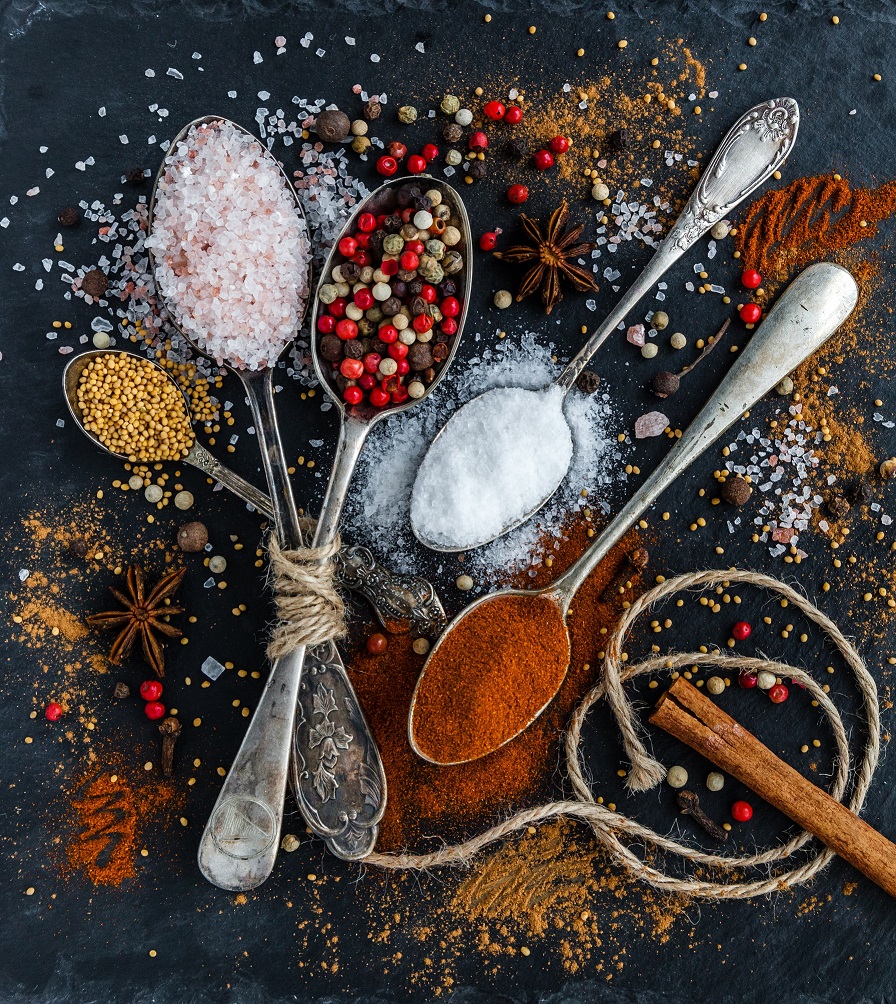Last Wednesday, I wrote about how to make a bechamel sauce, and it’s derivatives. The week before, I talked about tomato sauce. Those two sauces have one thing in common. In French cooking, they are both considered mother sauces. What that means is that they are “base” sauces. Sauces that, with the addition of other ingredients, become new sauces. In French cooking, there are five of those mother sauces. Today we are going to talk about the third sauce in the group; velouté.
You may have never heard of a velouté before. Whether you have heard of it or not, I can almost guarantee that you have made one previously. You definitely have eaten a velouté before. So then, what is a velouté? Well, that is what we’re going to talk about today.
How To Make Velouté and Its Derivative Sauces
What is velouté?
In French velouté means velvety, soft, and smooth on the palate. That should tell you what the texture of a velouté should be.
If you remember from last week, a bechamel sauce is milk thickened with a roux (equal parts flour and butter). A velouté is very similar, with one main difference. Rather than thickened milk, a velouté is a thickened white stock. Let’s break that down a bit.
A stock is just water flavoured with meat bones and vegetables. There are two main types of stock: white and brown. A white stock is made by adding raw bones to a pot with carrot, onion, and celery, and simmering it for a long period of time. This yields a clear, yellow, or light amber stock. No matter what colour the stock actually is one made with this technique is a white stock.
A brown stock is made the same way as a white stock with one additional step. Prior to being simmered the bones and often the vegetables will be roasted in the oven. This gives the stock a deep brown colour and a more intense flavour. It is also common to add tomato paste to brown stocks.
This may seem like unnecessary information. However, it is important to make the distinction between white and brown stock and here is why. A white stock thickened with a roux is a velouté. A brown stock thickened with a roux is an Espagnole sauce which is its own mother sauce. We will get into that more next week.
How to make a velouté.
Typically when making a velouté additional flavourings will be added. These may include carrots, onion and celery or herbs. Once the velouté is finished, these will be strained out and you will be left with a silky, smooth sauce.
Step 1
If you are adding additional mirepoix (mirepoix = carrots, onion, and celery) sweat it in a pot with a bit of butter. Sweating vegetable means to cook them in a bit of fat over moderate heat. The purpose is to draw moisture out of the vegetables. The intent is not to brown the vegetables.
Step 2
The second step in making a velouté is to make the roux. Now, if you did sweat mirepoix you will already have fat in the pot. You may need to add more. A roux is equal parts flour and fat (typically butter). If you don’t have enough fat in the pot add some more and then sprinkle the flour over the contents.
Stir the flour and butter together until all of the flour has been incorporated and cook for two minutes stirring constantly.
Step 3
Once the roux is ready add the stock and stir to fully distribute the roux. You will need to turn the heat down to low and simmer the sauce for twenty minutes. If the heat is too high the roux will stick to the bottom of the pot and burn. You will also have to stir the velouté every few minutes. If you would like to add herbs like thyme or bay leaf now would be the time to do that so the flavour cooks into the sauce.
Step 4
Once the sauce has simmered and has the desired consistency it’s time to taste it. You are checking for two things. You want to make sure the seasoning is good. If needed, add some salt and pepper. Some people prefer to add white pepper as not to get black flakes in their sauce. I don’t actually care but I’ll leave that up to you.
The second thing you are tasting for is flour. If the velouté hasn’t been cooked long enough you may be able to taste raw flour. If this is the case, put the pot back on the heat and cook for a few more minutes.
Step 5
The fifth and final step in making a velouté is to strain it through a fine sieve or cheesecloth. As I said earlier, the word velouté means silky and smooth. A chunky velouté just won’t do. So, strain it.
Uses
Now you have a delicious velouté, but what are you going to do with it? What was the point?
As I said in the intro to this post, you have likely eaten and even made velouté and not even known it. So, what did I mean? Well, velouté is a fancy word for a very basic thing; gravy. If you have ever eaten or made gravy at Thanksgiving or Christmas, you have had velouté. Stew is a velouté. There are lots of other sauces and soups that are veloutés as well. This brings us to the derivatives of velouté.
Derivatives
Allemande –
With the addition of mushrooms, egg yolks, and lemon to a basic velouté you get allemande sauce. This is great over poultry. The egg yolks are whisked into the hot sauce to give it a richer more decadent texture and flavour. The lemon acts to brighten the sauce and the mushrooms add flavour and texture.
This is essentially the high-end version of putting cream of mushroom soup on chicken or pork chops.
Aurore –
The addition of tomato purée makes velotué Aurore sauce. This would typically be served with white meat, poultry and even eggs.
Bercy –
Bercy sauce is velouté with the addition of shallots, white wine, fish trim, butter and chopped parsley. This makes a great sauce for any kind of fish dish.
Suprême –
Suprême sauce is made by adding mushrooms, cream and butter to a velouté. This is a classic sauce for chicken. The butter is whisked in at the last minute before serving to give the sauce a velvety texture.
Diplomate –
This sauce is velouté with fish trim, lobster, butter, and truffle and typically served over a whole roasted or poached fish.
Conclusion
The above list is not a complete representation of what can be made with velouté. It is simply a few of the many possibilities. I hope that the derivative sauces above give you an idea of how versatile a velouté can be. Also, how something simple like a stock thickened with a roux can create some of the most decadent and delicious sauces in French cooking.
Come back next Wednesday when I will be covering our fourth mother sauce, Espanagloe.



ITS VERY RELIABLE
Iam doing culinary arts and I was given an assignment about sauces. Indeed I have got wat I wanted.
Thank you chef